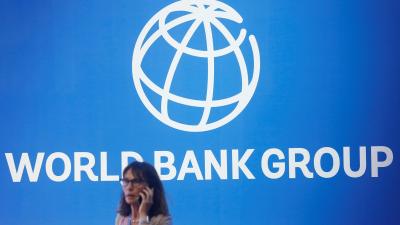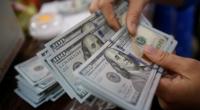 Even after several perks for the private banks in the last few months, there are no signs of the lending rate coming down rather it went up.
Even after several perks for the private banks in the last few months, there are no signs of the lending rate coming down rather it went up.
Bangladesh Bank’s latest figures show average rate stood at 9.7 percent in March, up from 9.55 percent the previous month and continued to rise in April as well.
The trend has left the central bank concerned with borrowing rates in some of the banks went up as high as 15 to 22 percent.
On May 30, the central bank’ Banking Regulation and Policy Department (BPRD) issued a circular where it described the rates as ‘irrational’.
“Lending rates will not come down to single-digit with banks collecting deposit on higher rates,” NCC Bank Managing Director Mosleh Uddin Ahmed told Bangla Tribune.
According to him, the government’s measures only helped to the call money rate to come down, but did not address the liquidity crisis.
Call money rate is the interest a bank takes from another bank or financial institution on short-term loans, usually for a day.
In its negotiation earlier this year to slash the lending rate, private banks managed the Bangladesh Bank to reduce the cash reserve ratio (CRR) by one percentage point to 5 percent, extend the deadline for adjusting ADR that measures loans as the percentage of deposits and lower the repo rate from 6.75 percent to 6 percent.
The repo interest rate determines the rate of interest a commercial bank has to pay on a loan from the Bangladesh Bank.
It had also made the government to keep 50 percent of its funds with them in an effort to address the liquidity crisis.
Despite the stimulus, lending rates are not coming down, but rising.
Amid the situation, the central bank issued a circular on May 30 all bank chiefs to bring down the spread to 4 percent.
Spread is the difference between interest rates charged for loans and paid against deposits.
The BPRD sent another circular to the banks asking to avoid quick upward trend of lending rate.
Lending rate is subject to unchanged upward within its deadline if the interest rate is mentioned as ‘fixed rate’ in the loan sanction letter, it read.
If the interest rate is mentioned as ‘flexible/variable/floating rate’, it can be changed in line a set of guidelines. Rates can’t be revised more than once a year. The borrower has to be notified three month prior to a revision, the central bank said in the order on May 30.
The next day, bank chiefs at a meeting with the governor asked to reconsider the directive citing liquidity crisis.
According to Bangladesh Bank data, all banks — state, private and foreign have hiked lending rates in March.
All of the 57 banks are now maintaining a double-digit rate with industrial loans charged as high as 22 percent.
The jumping lending rate has also caused the deposit rates to hike. In March, it stood at 5.3 percent from 5.18 percent the previous month leading the spread to increase to 4.52 percent from February’s 4.37 percent.
Describing private commercial banks as profit-mongers, former governor Salehuddin Ahmed told Bangla Tribune, “If the deposit rate goes up by 1 percent, the banks hike lending rates by 1.5 to 2 percent. The private banks are only focused on maximizing profit.”
 Business
Business
41153 hour(s) 26 minute(s) ago ;
Noon 12:20 ; Friday ; Jun 27, 2025
No signs of a single-digit lending rate
Send
Golam Mowla
Published : 01:30, Jun 05, 2018 | Updated : 01:30, Jun 05, 2018
Published : 01:30, Jun 05, 2018 | Updated : 01:30, Jun 05, 2018
0 ...0 ...
/hb/zmi/
Topics: Top Stories
- KOICA donates medical supplies to BSMMU
- 5 more flights to take back British nationals to London
- Covid19: Rajarbagh, Mohammadpur worst affected
- Momen joins UN solidarity song over COVID-19 combat
- Covid-19: OIC to hold special meeting
- WFP begins food distribution in Cox’s Bazar
- WFP begins food distribution in Cox’s Bazar
- 290 return home to Australia
- Third charter flight for US citizens to return home
- Dhaka proposes to postpone D8 Summit
Unauthorized use of news, image, information, etc published by Bangla Tribune is punishable by copyright law. Appropriate legal steps will be taken by the management against any person or body that infringes those laws.
Bangla Tribune is one of the most revered online newspapers in Bangladesh, due to its reputation of neutral coverage and incisive analysis.
F R Tower, 8/C Panthapath, Shukrabad, Dhaka-1207 | Phone: 58151324; 58151326, Fax: 58151329 | Mob: 01730794527, 01730794528






